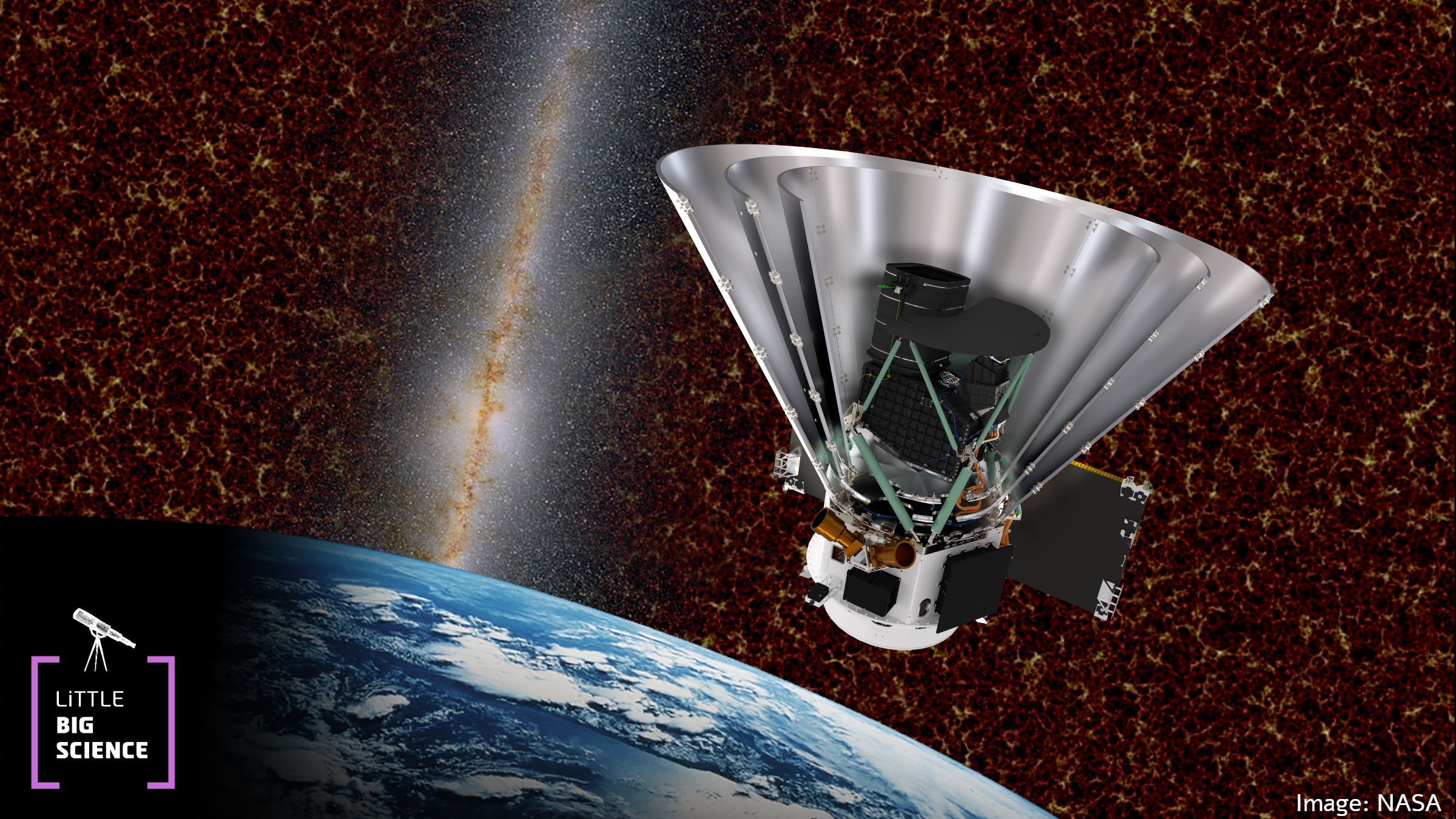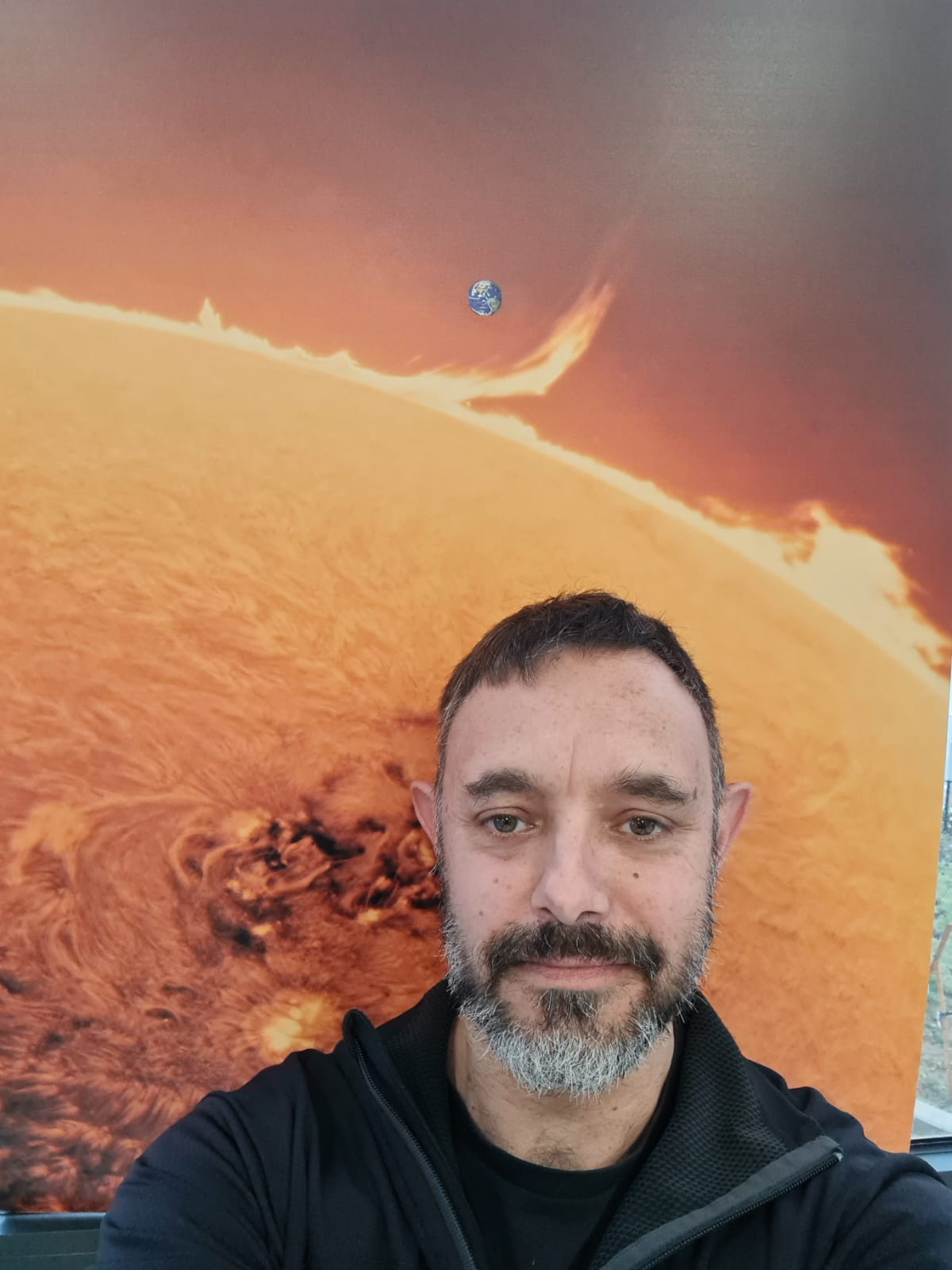
NASA recently launched two intriguing missions. The first includes a small space telescope with a big mission—to systematically and comprehensively survey the universe with the aim of unlocking the mysteries behind its creation. The second mission aims to broaden our understanding of the way by which our Sun affects the entire solar system.
Advertisement
On March 11 2025, a Falcon 9 rocket was launched carrying two intriguing missions. The payloads were placed in low earth orbit, relatively close to Earth, similar to the veteran Hubble telescope (the new James Webb telescope is located much farther away) [1].
The first mission involves a small satellite called SPHEREx (stands for Spectro-Photometer for the History of the Universe, Epoch of Reionization, and Ices Explorer) [2]. It will join Hubble and James Webb in their efforts to decipher the mysteries of the universe, and its role is to reveal the earliest light and to trace cosmic history. The new satellite will scan the sky twice a year and collect an unprecedented amount of data: imagine placing an observer in space who looks in all directions and records continuously! The aim of this survey and documentation is to map the universe in 3D and locate additional pieces of the puzzle of its formation. The satellite will trace the earliest light, which will illuminate the path toward understanding the formation of the first stars. It will try to uncover evidence of the enigmatic event known as “cosmic inflation”—the dramatic expansion that created the universe itself. In addition, it may discover hints of extraterrestrial life, in the form of evidence for chemical compounds associated with biological processes.
How will it work? The satellite is very small and light-weight, roughly the size of a washing machine and weighing about 200 kilograms. It includes a telescope equipped with a 20 centimeter mirror, demonstrating tthat good things come in small packages. It is much smaller than Hubble (2.4 meters) and James Webb (6.5 meters), and its uniqueness lies in its wide field of view. The telescope will operate in the visible light range, as well as the near-infrared (IR) light range, invisible to the human eye.
The telescope will produce a map of the entire sky in 102 different wavelengths in the near-IR (0.75–5 microns) range. The high number of channels will provide exceptionally continuous and broad spectral coverage—greater than any existing sky map. Why exactly 102? Because the telescope’s spectral array is based on six detectors with unique filters, each divided into 17 bands. Since every astrophysical process has a unique spectral signature, the telescope is sensitive to a wide variety of phenomena. Decoding the components of light—similar to splitting sunlight into a rainbow—reveals an object’s composition and distance. It also allows us to distinguish between different light sources. We hope that, based on the distinctive colors of objects and events, the telescope will be able to differentiate between different objects and processes—for example, between starlight or dust emission in our galaxy and light and emissions originating from distant galaxies.
The sky map produced by the telescope will include more than 450 million galaxies and over one hundred million stars in the Milky Way. The wide range of wavelengths measured will allow identification of various chemical compounds, including water and organic molecules.
The design of the SPHEREx space telescope is equipped with several conical radiation shields (resembling the cones fitted around dogs’ necks after surgery). These shields are intended to protect the telescope from IR radiation coming from the Sun, the Earth, and the telescope itself. Without the shields, SPHEREx would be “blinded” by environmental heat and the accuracy of its observations would be impaired. The shields also help to keep the telescope at the low temperature required for IR observations, about −210 °C.
The second mission received the awesome NASA-esque name of PUNCH (Polarimeter to Unify the Corona and Heliosphere) [3]. It will focus on our Sun and consists of four tiny satellites, each the size of a suitcase, that will operate in coordination to provide a prolonged 3D view of the solar corona. They will track the way the Sun’s corona becomes solar wind and follow the development and movement of solar storms, which will better our understanding of how the Sun affects our solar system.
The four satellites will operate together as a kind of single virtual instrument, providing comprehensive observations. One of the satellites is equipped with a camera with a narrow field of view (Narrow Field Imager), enabling detailed observations of focused regions in the Sun’s outer atmosphere [4]. The other three satellites carry wide-field cameras (Wide Field Imager). These cameras are designed to image the Sun’s corona and collect information about particles emitted into interplanetary space. Each of the three satellites will provide an image of a different region, with slight overlap between the imaged areas, to allow stitching of a complete picture of the corona and heliosphere.
In four-minute cycles, each camera will take three raw images using three different polarization filters. What are these filters for? What is polarized light? The direction of oscillation of light waves and other electromagnetic waves (the direction of the perturbation in space, which is the direction of the electric-field vector) is perpendicular to the direction of propagation of the wave. In unpolarized light, the oscillation has no defined direction; in polarized light, by contrast, the electric field oscillates on a single plane and its direction does not change with time (linear polarization), or it changes its direction over time in a circular manner (circular polarization) [5].
Polarization occurs naturally around us: light reflected from a wet road, scattering of light in the atmosphere, and also astrophysical processes. Light polarization is measured by a method called polarimetry [6], which was developed into an important scientific tool in the 19th century, especially in chemistry and biology. Polarimetry is used to study material properties, to identify specific substances, and even to understand complex biological and chemical processes: when light passes through a substance or is reflected from a surface, its polarization direction may change, and measuring these changes can teach us about the properties of the material.
During the mission, each of the three images in a shooting cycle is taken through a different polarization filter—that is, in each image only light in a specific polarization angle can pass. The information from the three images allows reconstruction of the light’s polarization state (aka Stokes parameters), thereby extracting information about the structure and depth of the solar-wind particles that scattered the light. Thus, the images will provide us with information on the plasma structure and its movement in the corona and solar wind—information that cannot be obtained from a “regular” photograph. Why is this useful? The observations of the new satellite system will help predict solar storms that could affect satellites and communication and power systems on Earth. The system will also help us understand phenomena caused by the solar wind, such as auroras [7].
The launch of the new satellites is an important and promising step in exploring the universe, and we look forward with curiosity to the discoveries they will bring. Although the budgets of SPHEREx and PUNCH do not reach the astronomical amounts of Hubble or James Webb, they prove that with a bit of creativity and a lot of audacity, even satellites that could (theoretically) fit in our kitchen can reveal the secrets of the universe. And they are financially modest as well: SPHEREx’s budget is about $488 million, and PUNCH’s budget is $165 million. These missions show that sometimes you don’t need a 6.5-meter mirror—the small ones sometimes make a big difference.
Hebrew editing: Smadar Raban
English editing: Elee Shimshoni
References:
[1] On Lagrange points and the position of James Webb
[2] SPHEREx NASA
[3] PUNCH NASA
[5] Post about light polarization
[6] Polarimetry
[7] Aurora








